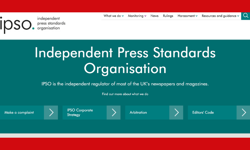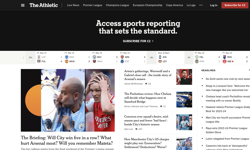Specialist business to business publishers are not always the quickest to embrace new technologies or introduce new business models. In some cases, this has been become a form of protection - witness those, mostly consumer and larger B2B publishers, who caught a cold blindly jumping on the internet bandwagon in the mid to late 1990s. But to dismiss new ideas and developments in the publishing industry without conducting research as to the suitability to your target audience, could mean that you miss out on an opportunity to add a distinct competitive advantage to your product.
Digital editions - electronic versions of titles utilising page turning software - have been around for a few years now, and many consumer magazines and regional and national newspapers have adopted them using various business models. The creative freedom offered by this fast developing medium provides publishers with a fantastic opportunity to grow revenue from their more adventurous clients who embrace the use of flash and interactive advertising. However, few business to business publishers outside the IT sector have adopted this technology, with fewer still actually selling digital edition subscriptions.
Evolving web strategy
At RCN Publishing, we operate in the nursing market; on the face of it maybe not the ideal place in which to offer new online technology. In general, nurses were slow to adopt the use of the internet, probably partly due to the lack of internet access at their place of work. But with the widening availability and affordability of home broadband, they have now caught up with the general population in terms of internet use, and online nursing resources are widely used, particularly for education purposes.
In 1996, Nursing Standard was probably the first nursing journal in the world to have its own dedicated, admittedly very basic, website. At that stage, we were way ahead of our market’s needs, but since then our online business model has developed from using our websites as a shop window for our print products, through using our online resources as an added benefit to drive print subscriptions, and finally to the full launch of our subscription based stand-alone digital editions last April.
We introduced digital editions to our market in October 2007, with a free trial period of six months. (As with any free trial, it is important to ensure that your subscribers know that it is exactly that, a free trial.) After the trial period ended, new and current subscribers had the choice of subscribing to a digital only edition, a print edition, or both.
Survey findings
We used the duration of the free trial to determine the potential of digital editions using a simple online survey tool, and this gave us a good indication of why readers would consider subscribing to digital editions:
* Environmental factors. However sceptical you may be regarding this as a key buying factor, this came out as the number one reason in our research as to why our subscribers would buy a digital edition rather than print. This may vary from market to market, but it is a factor not to be underestimated in the current environmentally aware climate. No pun intended.
* Storage. This is a particular issue for our weekly title, but also applies to our monthlies. Previous research showed that our subscribers often put issues aside to ‘read later’, and that the accumulating pile of unread journals sometimes acted as a visual prompt to cancel the subscription.
* Searchable archived issues. Leading on from the previous point, once a subscriber purchases a digital edition, they have access to all archived copies, with a keyword search facility across all issues.
* Ability to click live links. The software automatically turns any web addresses shown on the page to live links. Many of our research articles contain web links, so this is a particularly valuable resource in our market, and can also be used as an up-sell to advertisers.
* Speed of delivery. With the digital issues being available early on the day of publication, you are not at the mercy of the Royal Mail or other distributors.
In general, the results of the research were extremely positive, although there was a hard core group of our current subscribers who did not welcome digital editions, and would stick to traditional print delivery. This is particularly interesting as the survey was conducted online, demonstrating that even if your audience is web literate, they may not necessarily embrace all online developments you throw at them.
Subscribers in other markets will obviously have different priorities to those above, but the list demonstrates just how many reasons there are why a digital edition may replace or supplement print, and therefore just how many features and benefits the concept actually contains.
Pricing & marketing
In term of pricing, there is absolutely no reason why digital editions cannot be priced the same as, or at least very close to, the print rate. Some markets will of course be more price sensitive than others, and you can obviously test different price points in the survey. Although there are cost savings for the publisher, print and distribution being the obvious ones, you are still delivering the same content and have all of the costs associated with producing that content. To reduce the rates considerably for digital delivery devalues that content.
Marketing of the digital editions is conducted alongside that of print – basically you are selling the same content with a choice of delivery methods, but also with the added features and benefits of digital detailed above. Of course, there can be confusion around the word ‘digital’, and it is important to be as descriptive as you can about what it is that you are offering – having a freely accessible sample issue on your home page is a must.
There is the issue of VAT, which is applied to digital editions but obviously not to print. It’s worth discussing this with your tax consultant at the start of the process as it can get complicated, especially if you are selling joint print and digital subscriptions. This is another good reason why you should be bold when pricing.
While advertising led digital editions tend to be emailed directly to the recipient’s inbox, subscription copies need to be distributed more carefully. The method we use is to have the digital edition behind access control on the website, sending an email notification to subscribers telling them that the new issue is online, and giving a rough outline of its contents. This could become a revenue stream in itself through sponsorship.
Choosing a supplier
There are plenty of suppliers of digital editions in the marketplace, and it’s important to choose the right one for your needs. While some offer superb interactivity with flash rich utilities promising opportunities to develop advertising revenue, it is worth remembering the market you are operating in. Our market, for example, is not particularly advertisement driven, and we certainly wouldn’t utilise all of the features offered by some, maybe more expensive, consumer led suppliers. As subscriptions form the main part of our revenue, the stability of the operating system and the interface with our subscription database are of utmost importance. The production of a digital edition is simplicity itself, a simple FTP upload of your existing PDFs onto your supplier’s system. It’s not particularly resource heavy.
Our targets for digital editions are not massive as a percentage of our total subscription base, and the strategy is definitely not to replace all of our print copies with digital subscriptions. The results so far are extremely promising, although even in the nursing market there are extremes of buy-in from the different vertical sectors. One additional benefit of digital editions is that they can open up international markets which have previously been difficult to sell into due to the time and money restraints of postal delivery. This is a major opportunity for weekly and news led titles.
Maybe surprisingly, some of our subscribers actually purchase both the print and digital editions, and we will be conducting more detailed research into the reasons for this potentially lucrative trend.
A word of warning. While we have moved fairly quickly to develop new business models using digital editions, the Audit Bureau of Circulations hasn’t progressed so fast. This is unsurprising, as I believe that we are currently the only publisher auditing paid-for digital editions. If you have a subscriber who actually pays for both a print and a digital version of your titles, it will only count as being a paid-for print copy on your ABC certificate, although a small token recognition of the duplication is recorded as a percentage figure.
Hopefully this is something the ABC will address in due course, although their view may be that the same content viewed twice through different methods should only count once, even though it may have been paid for twice. As the audit procedures in place are heavily geared towards controlled distribution of digital editions, I would advise talking to them well in advance of your audit to ensure that you are able to provide the subscription information they require - we have found them extremely willing to work with us to overcome any procedural problems.
In summary, deciding if your market is right for digital editions is a fairly easy and inexpensive process. Many suppliers of digital edition software will be willing to give you a free trial, and once you have your sample issue uploaded to your website, there are plenty of quick and simple online research tools you can use to determine your audience’s views. Obviously a cost-benefit analysis based on the research findings is essential, but you could find that by offering this alternative means of content delivery, you are not only opening up new sectors of your market, but also increasing your retention of existing subscribers.
In simple terms, you have very little to lose and potentially much to gain.
FEATURE
Turning the page - online
Digital editions continue to divide opinion. Some think they’re the best thing since sliced bread; whilst others, well, err ... don’t. The important thing, says Phil Whomes, is to be aware of the opportunities and test your market. RCN Publishing did just that, and the results were positive.










